I'm trying to replicate the automatic bilinear filtering algorithm of Unity3D using the next code:
fixed4 GetBilinearFilteredColor(float2 texcoord)
{
fixed4 s1 = SampleSpriteTexture(texcoord + float2(0.0, _MainTex_TexelSize.y));
fixed4 s2 = SampleSpriteTexture(texcoord + float2(_MainTex_TexelSize.x, 0.0));
fixed4 s3 = SampleSpriteTexture(texcoord + float2(_MainTex_TexelSize.x, _MainTex_TexelSize.y));
fixed4 s4 = SampleSpriteTexture(texcoord);
float2 TexturePosition = float2(texcoord)* _MainTex_TexelSize.z;
float fu = frac(TexturePosition.x);
float fv = frac(TexturePosition.y);
float4 tmp1 = lerp(s4, s2, fu);
float4 tmp2 = lerp(s1, s3, fu);
return lerp(tmp1, tmp2, fv);
}
fixed4 frag(v2f IN) : SV_Target
{
fixed4 c = GetBilinearFilteredColor(IN.texcoord) * IN.color;
c.rgb *= c.a;
return c;
}
I thought I was using the correct algoritm because is the only one I have seen out there for bilinear. But I tried it using unity with the same texture duplicated:
- 1º texture: is in Point filtering and using the custom bilinear shader (maded from the default sprite shader).
- 2º texture: is in Bilinear filter with the default sprite shader
And this is the result:
You can see that they are different and also there is some displacement in my custom shader that makes the sprite being off-center when rotating in the Z axis.
Any idea of what I'm doing wrong? Any idea of what is doing Unity3D different? Are there another algorithm's who fits in the Unity3D default filtering?
Solution
Updated with the complete code solution with Nico's code for other people who search for it here:
fixed4 GetBilinearFilteredColor(float2 texcoord)
{
fixed4 s1 = SampleSpriteTexture(texcoord + float2(0.0, _MainTex_TexelSize.y));
fixed4 s2 = SampleSpriteTexture(texcoord + float2(_MainTex_TexelSize.x, 0.0));
fixed4 s3 = SampleSpriteTexture(texcoord + float2(_MainTex_TexelSize.x, _MainTex_TexelSize.y));
fixed4 s4 = SampleSpriteTexture(texcoord);
float2 TexturePosition = float2(texcoord)* _MainTex_TexelSize.z;
float fu = frac(TexturePosition.x);
float fv = frac(TexturePosition.y);
float4 tmp1 = lerp(s4, s2, fu);
float4 tmp2 = lerp(s1, s3, fu);
return lerp(tmp1, tmp2, fv);
}
fixed4 frag(v2f IN) : SV_Target
{
fixed4 c = GetBilinearFilteredColor(IN.texcoord - 0.498 * _MainTex_TexelSize.xy) * IN.color;
c.rgb *= c.a;
return c;
}
And the image test with the result:
Why don't substract 0.5 exactly?
If you test it you will see some edge cases where it jumps to (pixel - 1).



